10 surprising facts about UK saltmarshes you probably didn’t know
Saltmarshes. They might sound like something out of a gothic novel or a smuggler’s tale, but these wild, wonderful landscapes are packed with surprises. Sure, there’s mud (lots of it), but there’s also a whole world of quirky wildlife, secret superpowers and jaw-dropping eco magic at work.
These coastal wetlands are carbon storing, flood-busting, biodiversity boosting, mood lifting superheroes – nature’s own multitaskers! Whether you’ve strolled through one without even realising it, or you’ve never set foot near the squelchy stuff, here are ten surprising reasons why UK saltmarshes deserve a whole lot more love.
1. They're carbon-capturing superstars
Move over rainforests – saltmarshes are also mighty when it comes to fighting climate change. These coastal ecosystems can capture and store carbon from the atmosphere at impressive rates. In fact, in the UK saltmarshes store carbon 40 times faster than woodland! So next time you’re having a stroll through a marsh, just think, it’s hard at work, fighting climate change while you walk.
2. Saltmarshes are nature’s great flood defenders
If you think sea walls are doing all the heavy lifting, think again. Saltmarshes are like nature’s very own flood defence system. Against a backdrop of increasing storms and higher rainfall, they play a crucial role shielding our shorelines and coastal communities from flooding. These mighty marshes step in like a natural buffer, taming incoming waves and taking the brunt of their energy. Their springy plants and timeworn channels slow down water as it travels inland, easing pressure on coastal defences. At the same time, as saltmarshes are created and silt is deposited, they slowly raise the level of the land, again providing a buffer to coastal flooding. Who knew mud could be so mighty?
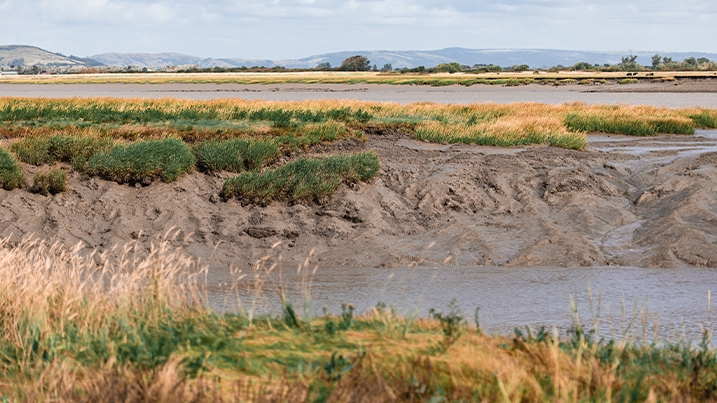
3. They’re proven to blow away the blues
Saltmarshes are often quiet, peaceful places, where you can escape the crowds and lose yourself in the sights and sounds of nature. With a pair of binoculars and a little patience, you might spot everything from dragonflies to otters. But even if you don’t, the tranquillity of these wide, open spaces is a surprise in itself – a perfect antidote to our busy lives. In fact, just ten minutes in a wetland like a saltmarsh can help improve your mood.
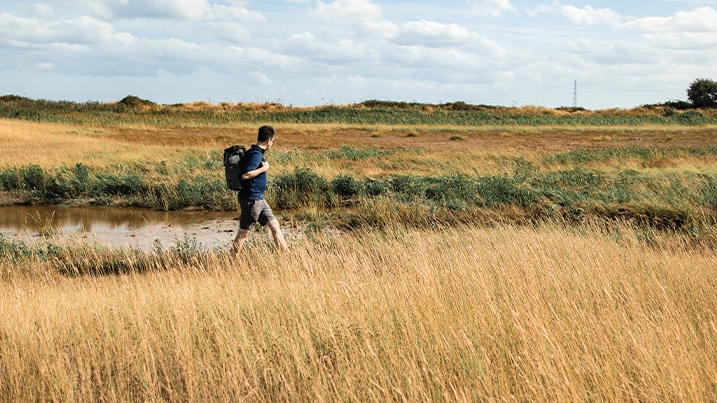
4. Saltmarshes are a bird watcher’s paradise
Bird lovers, rejoice! Flocks of geese flying overhead. Small waders moving up as the tide chases them. There’s so much to see. And all because saltmarshes offer the ultimate buffet for birds. In fact, one cubic metre of estuary mud contains enough worms, shellfish and bugs to match the calorie content of 16 mars bars. From redshanks to avocets, sandpipers to little egrets, these tidal habitats are alive with some of the UK’s most iconic bird species. At WWT Steart Marshes we’ve recorded 80 waterbird species, including dunlin and lapwing.
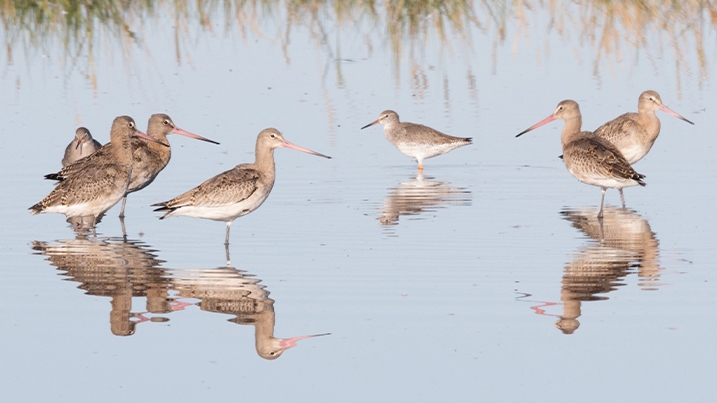
5. Saltmarshes are coastal nurseries
It’s not just birds that flock to saltmarshes. Fish, crustaceans, and all sorts of marine creatures use their shallow, protected waters as nurseries for their young. So, if you ever thought a saltmarsh was just a bit of coastal grass, think again – beneath the surface it’s a thriving biodiversity hotspot providing a haven for new life.
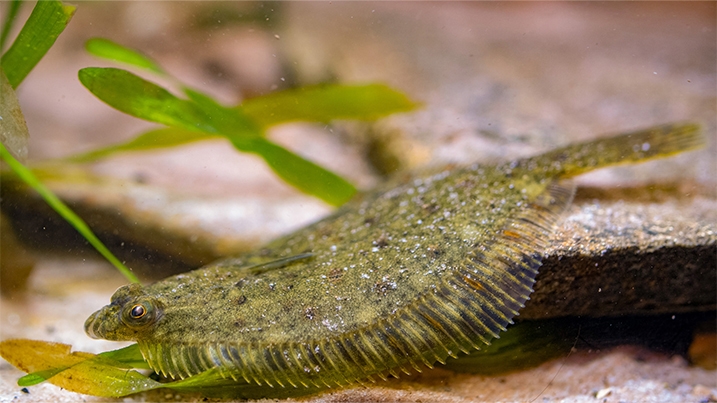
6. Saltmarshes are wildly colourful
Mud and marsh might conjure up images of grey and brown, but saltmarshes are anything but dull. Throughout the seasons, they transform into a kaleidoscope of colours – from golden browns in autumn to vibrant purples and pinks in summer, thanks to plants like sea lavender and thrift. It’s nature’s very own watercolour palette, and you can walk right through it.
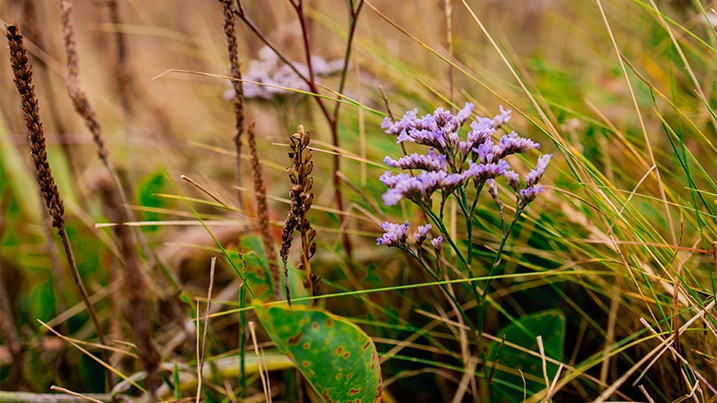
7. Saltmarshes are home to plants you can eat
Fancy some sea asparagus (also known as samphire) with your dinner? Saltmarshes are home to all sorts of edible plants that have been foraged for centuries. Samphire, in particular, has become quite the trendy ingredient in UK restaurants. We have sold the samphire that grows at WWT Steart Marshes to restaurants across the South West. It tastes crunchy and salty - perfect with seafood.
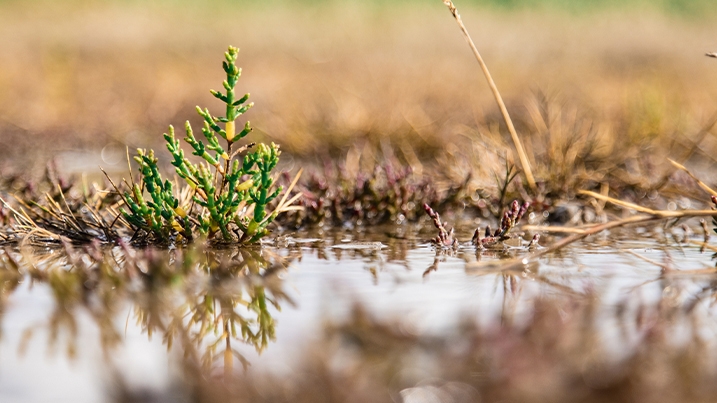
8. They smell like... the sea!
You might be expecting a marshy, muddy pong, but what you’ll actually get is that fresh, salty, sea-air smell. It’s the kind of scent that makes you want to breathe deeply, close your eyes, and instantly feel more relaxed.
9. Saltmarshes are steeped in history
Saltmarshes have been part of the UK’s coastline for thousands of years. Some were even harvested for salt back in medieval times – hence the name! Today, you can still find remnants of ancient salt pans in places like Essex and Norfolk. These areas are living history, offering a glimpse into the way our ancestors used the land.
10. Saltmarshes are disappearing fast – but you can help
Here’s a not-so-fun fact: saltmarshes are one of the most threatened habitats in the UK. Climate change, rising sea levels, and coastal development have all taken their toll, and we’re losing these precious ecosystems faster than ever. It’s estimated that 85% of English saltmarsh has been lost in the last 200 years.
But there’s hope. A way to turn the tide. WWT is on a mission to restore at least 22,000 hectares of saltmarsh across the UK by 2050. When combined with better protection of the approximately 50,000 hectares we already have, this could lock away an extra 350,000 tonnes of carbon dioxide equivalent per year. That’s like taking 150,000 cars off the road for one year. And unlike rainforests, which take centuries to bounce back, saltmarshes are fast workers, springing back to life and creating vibrant habitats in just a few years.
Saltmarshes: worth a wander
So, there you have it – ten surprising things about the UK’s saltmarshes that make them much more than just muddy wetlands. Whether you're looking for wildlife, history, or just a breath of fresh air, saltmarshes offer a world of discovery right on the edge of the sea. Plus, they’re helping fight climate change too.
Best WWT reserves to explore the UK’s breathtaking saltmarshes
The wild, wetland landscape of WWT Steart Marshes in Somerset is one of the largest created saltmarshes in the UK. Since we allowed the tides to breach the sea walls back in 2014, nature has flooded back into the reserve.
Situated on the northern shore of the Burry Inlet in South Wales, WWT Llanelli enjoys unrivalled views out across winding channels of beautiful saltmarsh, all the way to Penclawdd on the Gower Peninsula.
WWT Caerlaverock’s vast expanse of saltmarsh and mudflats situated on the north coast of the Solway Firth, provides one of the best winter wildlife watching spectacles in Scotland, including over 40,000 barnacle geese.
Nestled on the shores of Strangford Lough, WWT Castle Espie in Northern Ireland, is a magical mix of wide estuary views, tidal lagoons, saltmarsh, eel-grass mats and reed beds.
Once the land of wild aurochs, the saltmarsh at WWT Slimbridge isn’t as immediately obvious like it is at the other centres, and it looks a bit different. But you’ll find it towards the estuary at the north end of the reserve. In fact, this grassy type of saltmarsh, known as Atlantic salt pasture, is incredibly rare and is created thanks to the high tidal ranges of the Severn Estuary. The best place to view it is from the Estuary Tower. You can find out more about it here:
Visit a wetland
Ready to experience these wonderful, wild, superpowered landscapes firsthand?
Discover a world of hidden wonders at WWT’s wetland centres. With breathtaking views and access to some of the UK’s most wildlife-rich saltmarshes, they’re the perfect place to encounter incredible creatures and uncover the secrets of these remarkable places. Come visit and see what surprises await!
Plan your visit